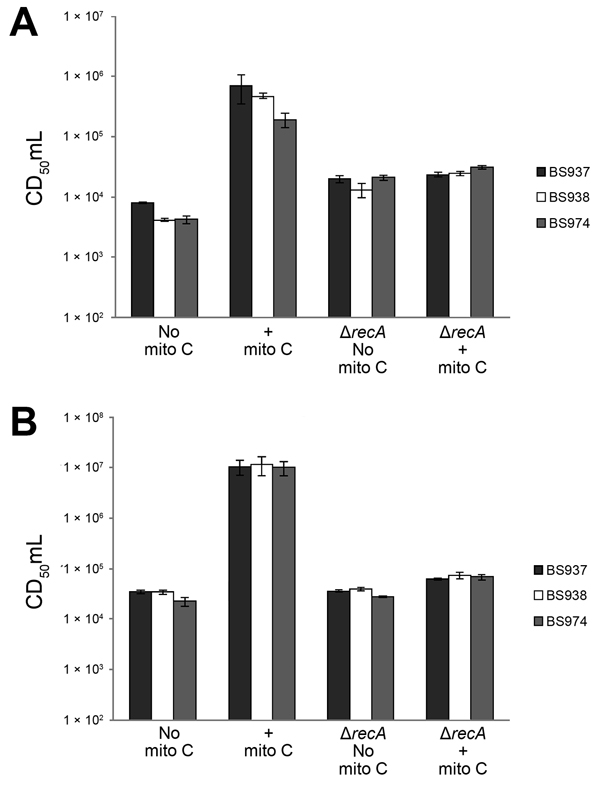Volume 20, Number 10—October 2014
Research
Clinical Isolates of Shiga Toxin 1a–Producing Shigella flexneri with an Epidemiological Link to Recent Travel to Hispañiola
Figure 2

Figure 2. Mitomycin C induces production of Shiga toxin 1a (Stx1a) in a recA-dependent manner. Exponentially growing cultures of the indicated parental strains or recA mutants were grown with or without 0.5 μg/mL mitomycin C (mito C) for 3 hours. Supernatants (A) or whole cell lysates (B) were prepared for determination of cytotoxicity for Vero cells. CD50/mL values were determined as described in Figure 1. Data are averages of 3 biological replicates. Error bars indicate standard error. Δ indicates samples that are recA mutants.
Page created: September 12, 2014
Page updated: September 12, 2014
Page reviewed: September 12, 2014
The conclusions, findings, and opinions expressed by authors contributing to this journal do not necessarily reflect the official position of the U.S. Department of Health and Human Services, the Public Health Service, the Centers for Disease Control and Prevention, or the authors' affiliated institutions. Use of trade names is for identification only and does not imply endorsement by any of the groups named above.